From April 11 to September 7, 2025
11 Quai de Conti, Paris


Full price: €12
Reduced price: €10 (upon presentation of the 10-franc Georges Mathieu coin)
Pass Navigo rate: €10
Free admission*
*For visitors under 26, social welfare recipients, job seekers, teachers, education pass holders, tour guides, and partners.
Details of free admission
The entry ticket grants access to both Georges Mathieu exhibitions.
Group bookings are now open!
For any request regarding guided or self-guided tours, please email:
reservations-groupes@monnaiedeparis.fr
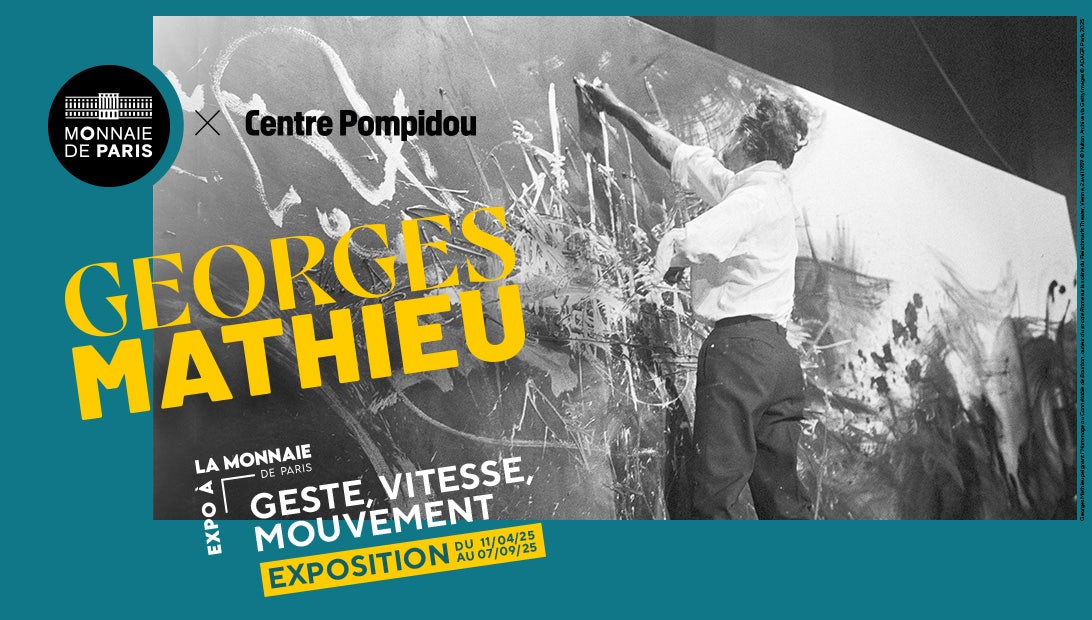
No other artist than Georges Mathieu, at any time, has got such an impact on the visual environment of his contemporaries: his abstract images, which became a signature, were found in paintings, but also on all the modern media, from posters to television credits, as well as on medals and coins, while their author forged an extraordinary public persona, which caused controversy and secured his place in popular culture.
This Georges Mathieu’s retrospective is presented more than 50 years after his work was last exhibited at the Hôtel de la Monnaie in 1971. The result of a collaboration between the Centre Pompidou and La Monnaie de Paris, this exhibition compares his pictorial work with his numerous creations for the minting institution, of which the famous 10-Franc coin remains the most iconic production.
This chronological and thematic exhibition retraces the career of Georges Mathieu from the 1940s, when he participated in the creation of an international Abstract Expressionism movement, up to the 1990s, with a special focus on the Mathieu collection held by the Musée National d’Art Moderne.
Curators :
Christian Briend, Chief Heritage Curator and Head of the Modern Collections Department at the Centre Pompidou
Éric De Chassey, Director General of the National Institute of Art History (INHA)
Béatrice Coullaré, Head of Conservation and Collections at the Monnaie de Paris
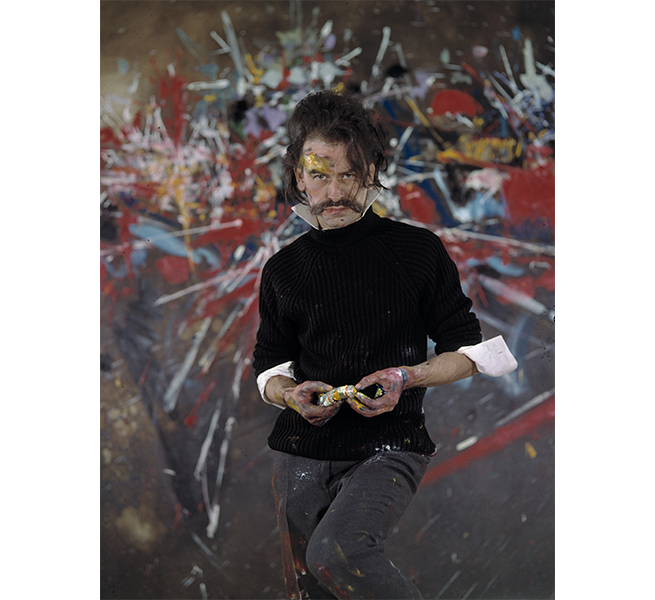
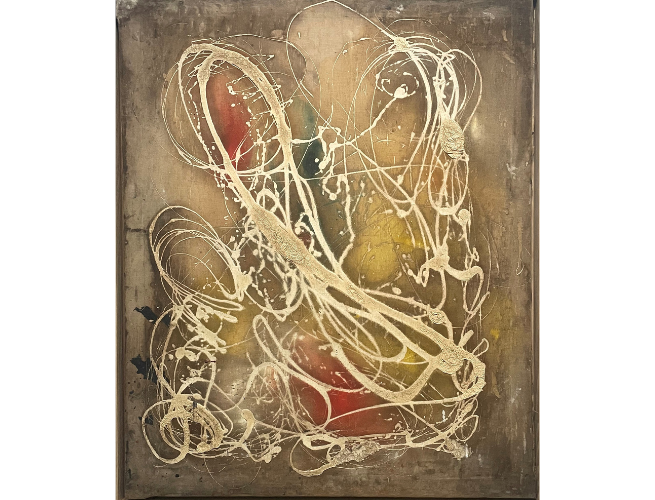
In the 1940s, like the German painter Wols, Georges Mathieu became an important figure in informal abstraction, promoted by the critic Michel Tapié. Mathieu developed “Psychic Non-Figuration”, combining abstract graphics and organic forms on refined chromatic backgrounds. His distinctive technique consisted notably of squeezing paint from the tube directly onto the canvas. This period, known as “Limbos”, evolved in the early 1950s towards one that used more autonomous signs.
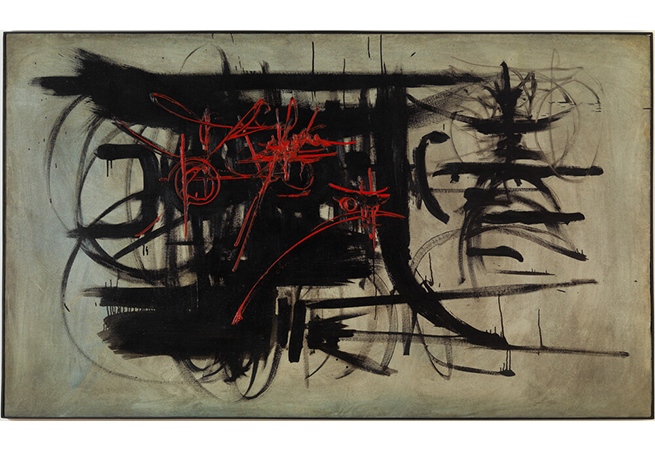
In May 1950, the Parisian Galerie René Drouin exhibited the illustrations Mathieu made for the poem "La Complainte Sauvage" by Emmanuel Looten, along with eight paintings. This exhibition marked a new phase in Mathieu's work, characterized by autonomous signs on uniform backgrounds. From a technical perspective, the artist enhanced thick black graphics with red lines. Mathieu was now drawing inspiration for his titles from little-known figures or episodes from France’s medieval past, which gave his abstract art a paradoxical figurative dimension.
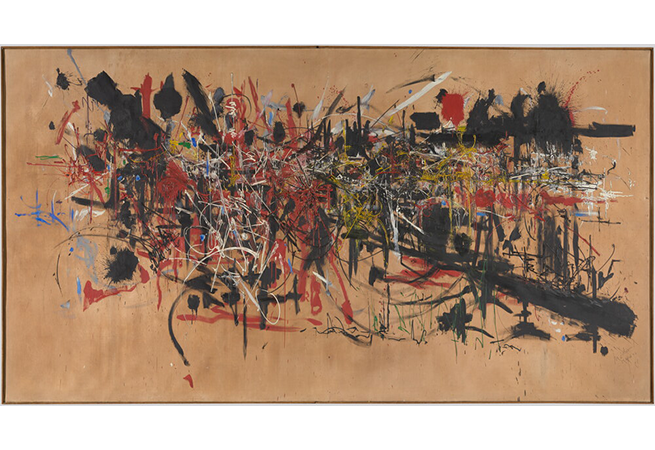
From the 1950s, Georges Mathieu made large-scale paintings that combined gestural abstraction and historical references. These works are representative of what the artist calls “lyrical abstraction”, which consisted of emphasizing the act of painting by following physical or psychic impulses. The paintings were made within a limited time frame, often in public, with an emphasis on speed of execution and risk-taking. Their titles, drawn from episodes of the French Ancien Régime that often involved warfare, make these spirited compositions a new kind of historical painting.
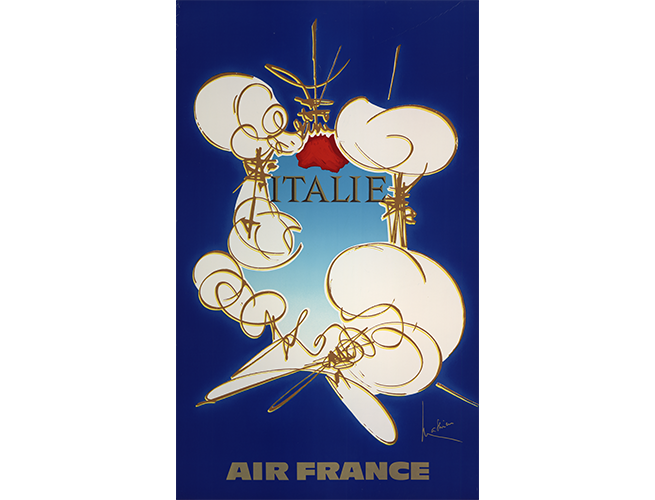
From the 1950s onwards, Georges Mathieu increasingly exhibited internationally, notably in Japan in 1957 and Brazil in 1959. His cosmopolitanism led to him designing a series of posters for Air France in 1966, aiming to capture the essence of the destinations served. To do this, Mathieu incorporated figurative elements into his compositions. Produced with special papers and inks, these posters were exhibited at the Musée National d’Art Moderne in 1967 and became widely distributed.
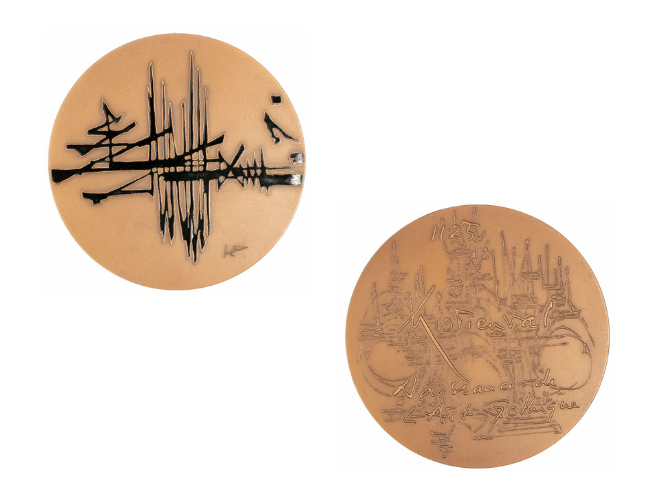
The aesthetics and splendor of 17th-century France were a recurring source of inspiration for Mathieu. Of his "Dix-huit moments de la conscience occidentale", presented at the Hôtel de la Monnaie in 1971, three are dedicated to the century of Louis XIV. Some paintings pay homage to French composers, notably "Les Nymphes de Diane", which refers to a ballet by Jean-Philippe Rameau. Installed on the grand staircase, this large-scale composition was designed for this location.
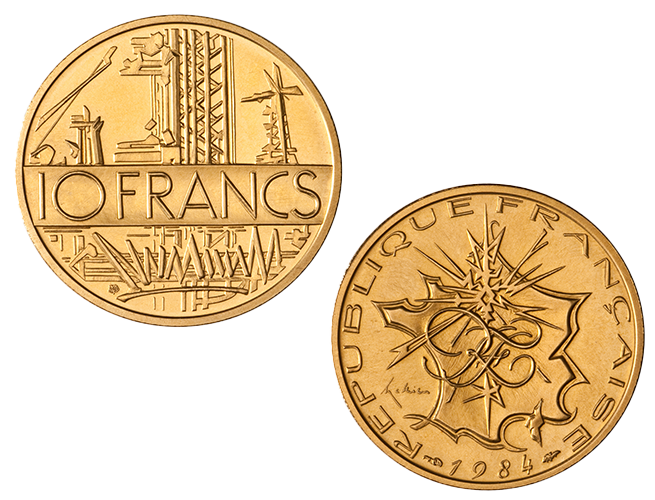
In the early 1960s, Georges Mathieu adopted a new style, introducing rectilinear lines. Until the 1970s, this more geometric language made use of graphics that may have evoked the urban or industrial world. Mathieu chose to symbolize an evocation of the technical and industrial progress of the "Trente Glorieuses" (1945-1975) on the reverse of the 10-Franc coin minted in 1974.
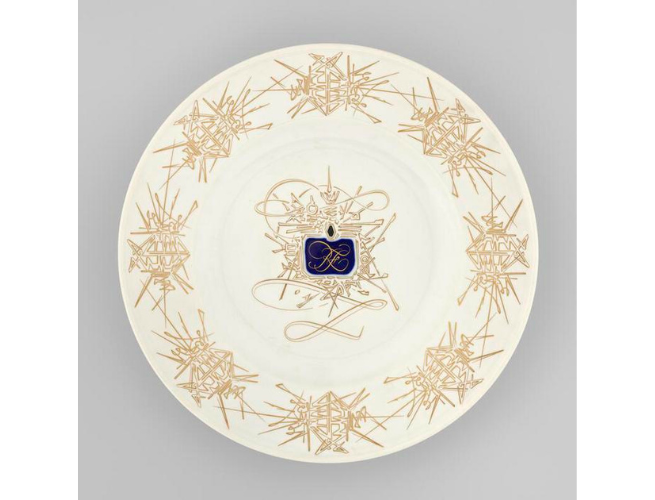
In the late 1960s, Mathieu repeatedly indulged in drastic chromatic reductions. In the form of long paint streaks straight from the tube, a technique which had become a trend, the white-on-white marks were accompanied by only a few subtle patches of color. Commissions from the Manufacture nationale de céramique de Sèvres allowed Mathieu to apply this minimalism to porcelain with services that feature gold patterns on a white background.
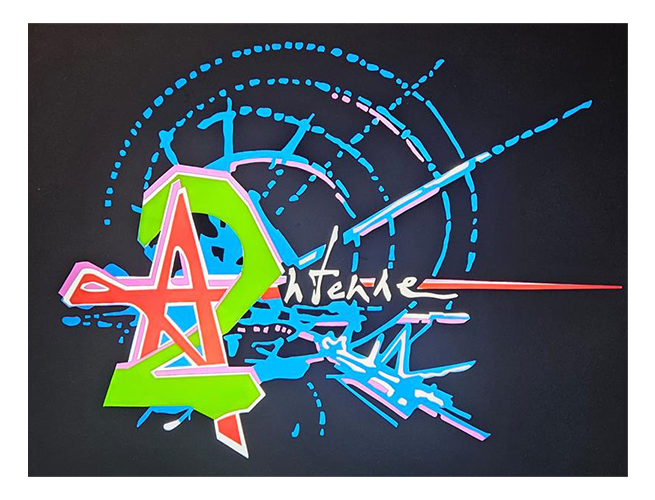
Convinced that “television is a prodigious tool,” Mathieu was keen to ensure maximum dissemination of his work by painting in front of the cameras. In "Georges Mathieu ou la Fureur d’être by Frédéric Rossif" (1971), Mathieu takes part in a “graphic interview” and several painting sessions with musical accompaniment by the Greek composer Vangelis. The artist created the logo for Antenne 2, the new French color television channel. It was used until 1983. In 1985, he designed the "7 d’Or" trophy, a ceremony which, based on César awards, honored television personnalities and ran until 2003.
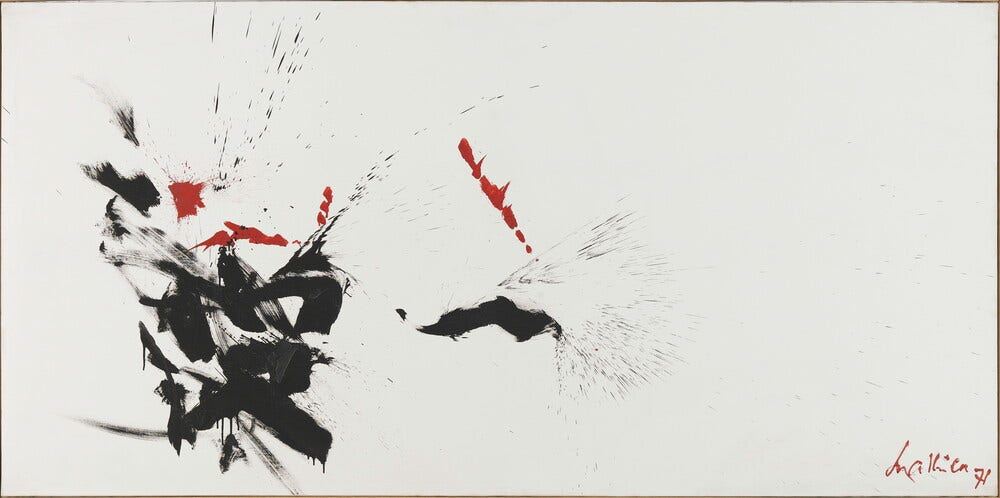
In 1957, a trip to Japan confirmed Mathieu’s interest for the Zen aesthetics, which occasionally led him towards a more minimalist approach. In 1964, he illustrated the book "Le Judo de l’Esprit" by Robert Godet. In 1971, he was seen painting "Karaté" at the beginning of the film "Mathieu ou la Fureur d'être". This sequence illustrates the notion of risk and speed which are fundamental to his artistic practice.
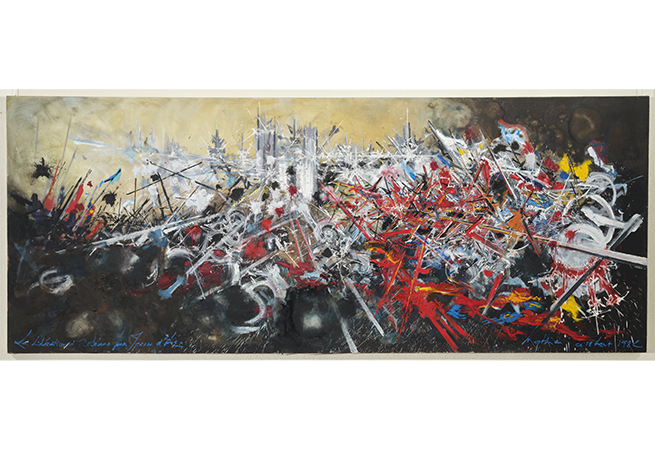
From the 1980s onwards, Georges Mathieu continued to work in an artistic context that was no longer as favorable to the “lyrical abstraction” of which he appeared to be the last representative. Unique among his works, "La Libération d’Orléans" par Jeanne d’Arc constituted an astonishing return to figuration, even as Mathieu continued to produce fully abstract paintings. Through their poetic-psychological titles, these paintings convey a kind of disenchantment.
From April 11 to September 7, 2025
In parallel to the monographic exhibition in the historic salons, La Monnaie de Paris wanted to showcase the echoes of Georges Mathieu's work in the practices and artistic gestures of urban art, by inviting six graffiti artists from various generations to intervene on-site (JonOne, Lek & Sowat, Nassyo, Camille Gendron, Matt Zerfa), each selecting drawings by the painter. The practice of the "sign-signature," the speed of execution, public performances, and very large formats are all characteristics of Mathieu's painting that these artists found particularly inspiring.
We invite you to update it to have an optimal and secured experience.